Nature & Health in the Theory of Traditional Chinese Medicine (TCM)
The definition of nature which applies to this study is based on the sayings from TYECIM: Su Wen Yin- Yang Li Hu Lun. The translation of the sayings is: living beings are the result of total nature and the development in nature has lead to this inevitable stage of creation of living beings. The origin of life comes from Heaven and Earth. There is Heaven and Earth and when the universe is revolving the earth echoes all things, and life begins to develop (Beinfield and Korngold, 1992; Ti, 1995). TCM has been practiced in China, Taiwan, Korea and Japan for over 2,000 years and it still widely used there today. Western development of medical research has helped us to understand TCM more scientifically. However proving TCM in the method of the Western mainstream medicine is difficult as it requires great effort and funding due to its complex system which is based on the philosophy that emphasizes humanistic qualities. However, when certain theories of TCM has been proven scientifically in the West, for example, acupuncture, its development has sped up and its practice has spread rapidly in the West (Maciocia, 1989).
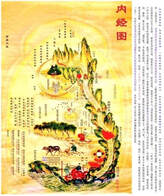
3.1.1. Man and Nature in the Theory of TCM
This diagram explains the detail of how energy is transformed in the body. At the first state the water wheel is turning, bringing energy up to the body. In the next stage this energy is transformed into vital energy through the state of mind. This vital energy circulates through the meridians of the body. This process nourishes the body, improving health and generates more energy. However, when the body is weak energy is wasted, it can escape from the body through the orifices. Weakness can be caused by illness, injury or negative emotion. If the body is in a healthy state the vital energy can turn into spiritual energy which means the essence of the energy that provides maximum benefit to the body and mind (Tzu and Wong, 1992).
3.1.2. The unification of man and nature
The theory of the unification of man and nature in TCM can be traced back to TYECIM around 1000 B.C. (Veith, 2002). This text said that human beings live in nature and nature provides the necessary living conditions for human beings. However the changes in nature may directly or indirectly affect the human body. Changes in nature cause the relevant changes in the human body. If this biological change exceeds the balance or the adaptability of our body it causes the development of illness (Yin and Zhang, 2000). Therefore, TYECIM: Lin Su.Shui Ka says that heaven and man are inter-connected. “Heaven” here means everything above the earth including outer space (Veith, 2002).
3.1.3. The interrelation between man and nature
According to TCM theory the activities between all living beings and nature have an extremely close relationship. In fact, the proverb in Chinese characters: (xi xi shen kwan is equivalent to: be closely linked, be closely bound up with) is often used to describe how close the relationship between man and nature is. It is so close that every breath we take affects nature and vice versa (Wu, 胡志勇, 2010). The inter-relationships between the activity of a person, nature and the environment need to maintain harmonious order, otherwise they cause negative effects to our health.
3.1.4. The seasonal effect on health
The changes of the weather in the four seasons generate a cyclic pattern that affects all life and human beings. There is germination in spring, growth in summer, retreat in autumn and hibernation in winter. This phenomenon applies to all life forms, and human beings are no exception. It is important for a human body to have the appropriate seasonal reaction and relevant response in order to maintain health (Wu, 2002).
TYECIM: Su Wen.Zi Qi Tio Sun Dai Lun Pian: 2nd Chapter (Li and Liu, 2005b) explains everything and how life on earth began with the law of ‘yin-yang’ and the four seasons which is also the origin of life and death. When we go against this law, we possibly create a harmful effect. When we follow, we are unlikely to develop any illnesses. This is called the ‘Tao’, ‘Tao means the way and the method of maintaining the harmony between this world and the beyond’ (Veith, 2002). If we follow the law of ying- yang, we will live well and our illnesses are likely to be cured. However, if we disregard this law, it will result in chaos, then will become sick and may die.
Different temperatures of the day also affect our bodies. During the changes of day and night and the transformation of yin and yang, our body responds accordingly. For example, during day-time, the ‘yang-Qi’ tends to expand towards the surface of the body. During the night, it usually returns into the internal body.
3.1.5. The geographical effect on health
The geographical environment and life styles around the world are varied. The understanding of the inter-reaction and inter-responses of man and nature is not a mere theory, but emphasises man’s active role in acclimatization in order to preserve health (Li and Liu, 2005b) .
3.1. The wholeness of the body
According to the fundamental theory of TCM, there are two main types of unifications. The oneness of man and nature that creates the big universe is the concept of macrocosm, while ‘The human being is a microcosm of Nature, a smaller universe’ (Beinfield and Korngold, 1992). This system is illustrated in Figure 1. The interrelationships among the organs, tissues, muscles, blood, meridians and so on are vital as they cause the internal pathological changes in our body when the balance among them is disturbed (Wu, 2002).
3.2.1. The application of the theory of the wholeness
In the philosophy of TCM, the balance of body, mind and nature are emphasised in order to maintain a state of equilibrium psychologically and biologically. Psychological illnesses can be treated through the regulation of the body activity; similarly, physical illnesses can also be moderated or treated with psychological therapies (Yin and Zhang, 2000). Based on this understanding I intend to explore an alternative way to help the body restore its equilibrium through this study.
3.2. Yin-yang and health
Definition of Yin and Yang in the theory of TCM: Yin-yang is about the origin of the universe. It also explains the theory and the law of how all things change and evolve. According to I Ching ‘one yin and one yang become tao’ (Yin and Zhang, 2000). The world is composed of matter and in the material world there is yin Qi and yang Qi which have many relationships. As a result of these relationships life can continue to develop and change. “Yin and Yang represent opposite but complementary qualities. Each thing or phenomenon could be itself and its contrary” (Maciocia, 1989).
3.3.1. The Theory of Yin-Yang
The theory of yin-yang is the most distinctive way of thinking throughout the whole process of TCM including the physiological, the pathological and the treatment (Maciocia, 1989). Furthermore, the yin- yang theory is not only limited to TCM but also applies to many areas in Chinese culture and the way of life in China. For example, in the field of ‘Fung Shui’, the Fung Shui master has to understand yin-yang philosophy and its applications in great depth (Eva Wong, 1996). In everyday life, Chinese people often refer yin-yang theory to a place, the weather, the types of food, the Cosmo-energy of a situation in order to improve health and well-being (Too, 2011, 2005, 2004).
The early record of yin-yang theory can be found in the “Book of Changes” (I Ching) about 700 B.C. (Maciocia, 1989) and the YECIM (Veith, 2002). According to yin-yang theory, the beginning of the earth and all things are the result of the changes, evolution and transformation of the two dynamic polar but unified energies. The yin Qi and yang Qi in the universe is regarded as the law of the universe (Ni, 1995). There is an intimate relationship between the activity and life of human beings and their natural environment (Wu, 2002). ‘Everything in creation is covered by Heaven and supported by Earth. When nothing has as yet come forth the Earth is called: the place where Yin dwells; it is also known as the Yin within Yin. Yang supplies that which is upright, while Yin acts as a ruler of Yang’ (Veith, 2002). ‘The philosophisers and doctors in ancient China explained all the phenomena and the nature of the universe and life with the theory of yin-yang’ (Wu, 2002).
3.3.2. Categorization of Yin and Yang
Opposition and unity
A classic example of opposition and unity is the yin-yang of a mountain. During daytime, when the sun shines on a mountain, the sun is yang and the sunny side of the mountain is yang-in-yang. The shady side is yin-in-yang. At night, when the moon shines on a mountain, the moon is yin, but the moonlit side of the mountain is yang-in-yin and the dark side of the mountain is yin-in-yin (Beinfield and Korngold, 1992).
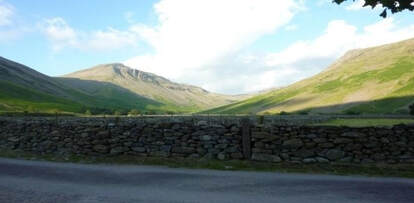
Since all things are produced through the motion and variation of Qi, everything can be divided into the aspects of yin and yang such as heaven and earth, day and night, the water and fire, upper and lower, cold and heat as well as man and women etc’ (Wu, 2002).
Similarly, since the human body, is seen as a microcosm of the universe, every part of the body can be divided into yin and yang. Because they must exist as a pair, one of them has a predominant character and they are only relative (Wu, 2002). For example, the head is yang and the body is yin; the chest is yin and the back is yang and the organs are divided into yin organs and yang organs, but simultaneously, both yin and yang coexist though one is often more dominant than the other.
Through this categorisation, we understand how man and nature interact with each other and maintain equilibrium.
3.3.3. Interdependence between Yin and Yang
The concept of yin and yang appears to be opposite but they are interdependent and interact with each other constantly to change, evolve and maintain a level of equilibrium in nature as well as in human life. We are conditioned by the constantly changing relationship of these two cosmic regulators which are the yin and yang qualities. ‘In conception yin and yang must exist in a pair and no side can exist solitarily’ (Wu, 2002).
The characteristics of yang are often referred to active and functional situations. It tends to move outwards and upwards, warm or hot, restless or aggressive. The yin is applied to quietness and often refers to materialistic substance. It tends to contract, moves downwards, appears to be cold, dim, soft or slow (Maciocia, 1989). For example, the fire which is yang burns the water which is yin. When the water is heated up by the fire it changes into vapour which is yang that rises up. This concept can also apply to our body. If a person has a fever which is yang it heats up the body fluid which is yin. When the body fluid, the yin, is boiled up into vapour it becomes yang.
3.3.4. Yin and yang in the body
In our body, the Qi which is yang moves the blood which is yin. The blood circulates and nurtures all parts of the body through which the Qi is able to be produced. When the blood is insufficient in certain parts of the body, Qi cannot be produced to move the blood. Similarly, if Qi is insufficient, blood cannot circulate or it becomes stagnant which results in poor Qi production or it can even stop. ‘Blood and Qi are inseparable as Yin-Yang. If they are separated, the blood does not move and Qi has no basis, so there is no life’ (Beinfield and Korngold, 1992). A constant level of balance between yin and yang is important to maintain health. When there is an excess in yin it causes a yang illness the body becomes hot, when then is an excess yang it will cause a yin illness and the body becomes cold. In YECIM, it says ‘Predominance of yang leading to heat….Predominance of yang leading to disease of yin… Predominance of yin leading to cold… Predominance of yin leading to disease of yang …’ (Wu, 2002).
3.3.4.1. The balance of yin and yang in the body
The following diagrams illustrate the various balanced and in-balanced stages of yin and yang. (Maciocia, 1989)
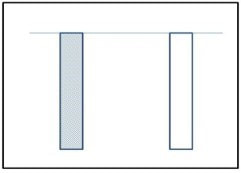
The left figure shows the mutual consumption of yin and yang, which yields health in the body, everything in man and nature consists of the concept of yin and yang. Hence if we can work towards equilibrium we can maintain our health.
The figure on the right shows an excess of yin, here the yin in consuming the yang and if this continues to a certain stage the body will not be able to keep itself warm. The body will lose heat and have less energy and a cold may develop.
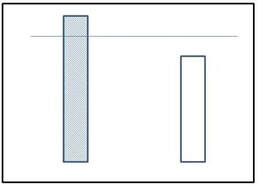
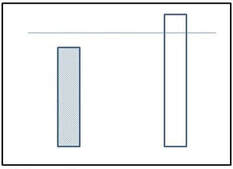
The figure on the left shows an excess of yang and here the yang is consuming the body fluids which are yin. As yang escalates the body temperature will raise causing loss in body fluids. For example fever may occur.
The figure on the right shows a deficiency of yang however the yin is at a sufficient level. Here the body may be low on energy and cold but it does not experience the same state of excess yin as in the above figure. It stated in the book ‘Between Heaven and Earth’ ‘when yang is deficient vital functions like digestion, and circulation are retarded……Again, a person becomes weak and tired with a poor ability to heal’ (Beinfield and Korngold, 1992)


The figure on the left shows a deficiency of yin and the yang is at a sufficient level, here the body may feel hot and in order to equalise the body the yin must be topped up. It says ‘when yin is dissipated, blood and moisture are depleted….a person becomes weak fatigued and had a lower resistance to stress’ (Beinfield and Korngold, 1992)
The process of cooking with a steamer can be an example for the balance of yin and yang in the human body. If we imagine our body as a steamer with a constant temperature which heats up the liquid or moisture inside, the amount of heat and the proportion of the liquid have to be balance in order to maintain the same temperature constantly like our body.
3.3.5. The symbol of yin and yang
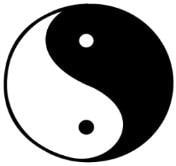
The symbol of yin and yang is the most commonly recognised internationally (Tzu and Wong, 1992). When the yin and yang are harmonized with each other, our health is well balanced. If the deficiency or excess happens to one of them, the other is also affected. When such an unbalanced stage continues and reaches a certain limit, the other parts of our body are also affected.
The yin and yang concept are important in nature and by understanding their function it will help us to study the relationship between man and nature in order to maintain health and well-being .
Obviously, our body is very complicated. The bio-chemistry in our body is not only affected by food and environment, it is also affected directly or indirectly by our mind for better or worse in balancing the stages of yin and yang. In well developed countries, most people have sufficient basic living conditions.
However, one cause has been expanding its influence on people’s health regardless of their various degrees of health problems. That is ‘Emotion’.
3.3. Emotion and health in the theory of TCM
TCM believes that human emotion is in-born. Emotional activity is a person’s feeling through his/her experience of all external things and phenomena. It is also reflected in the activity of the internal body. Normal changes of emotion within a short period of time do not cause illness to the body. However, if emotional fluctuation is too much or stays for too long, it causes illness. For example, if the condition of one’s anxiety causes extreme stagnation of the blood flow, it can threaten one’s life. Sudden disorder of excessive excitement or anger will confuse the respiratory system and the body network which will result in poor Qi and blood circulation in the body (Li and Liu, 2005b).
The YECIM describes the details of the 5 types of human emotions, listed as joy, anger, anxiety, rumination and fear, and their effects on pathology and treatments. Later on, the emotions of sadness and fright/ shock are added to form the 7 emotions in the theory of TCM. (Veith, 2002)
Unbalanced emotions can develop into a psychological problem known in contemporary times as stress. An accumulation of stress causes different side-effects in different parts of the body. For example ‘excessive anger impairs the liver…. excessive fear impairs the kidney’ (Wu, 2002). The following research studies show that an excess of emotions can cause ill health in the body. A study at Shandong University was titled ‘Demonstrate hypothesis of “life events are originating factor of emotional stimulations causing diseases”’ (Yu et al., 2010). In one study, patients were given special emotional health care in accordance with the theory of TCM and healing after surgery. The findings showed that 82% recovered efficiently after surgery (Yuan 袁梅玲, 2010).
3.4. The five elements
According to TCM philosophy all things in the natural world can be categorised into 5 elements: wood, fire, earth, metal and water. They are vital to our existence and to maintain the balance of our health, we depend on their interrelationships (Wu, 2002). If one or more of the elements is out of balance it results in the destruction of nature, including the external environment and our internal body (Maciocia, 1989).
I will write about different western scientists who are researching ways to induce relaxation in the next section. Some of these have come from Eastern philosophy. There are many different methods of quieting the mind including stillness and movement. The balance of the Qi can be improved by practicing meditation and thus the five elements can be maintained in a healthy state.
Nature images have been linked to health benefits as will be discussed in the Western research section.
3.6.1. The art of qi cultivation ; the tranquillity of the mind
Realizing that the improvement of our health depends on our qi circulation, i.e. the internal flow of energy in our body, the ancient sages and expert philosophers in China developed a large variety of body movements. The most commonly known is Dao-yin which means to lead and guide the energy in the body. The applications of those movements were recorded in the earliest Chinese medicine book, the YECIM which I introduced at the beginning of this Chapter (Li and Liu, 2005b). The practice of “Qi- gong”, a more recent name for a form of these ancient movements, represents similar ways of healing and improving health through ‘all Chinese self-healing exercise and meditation disciplines from ancient times to the present’ (Cohen, 1997). Cohen believes that ‘Qi gong’s unique combination of movement, breath, and meditation improves the functioning of virtually all of the systems of the body and has both preventative and curative effects’ (Cohen, 1997). He also states that the quieter the mind, the greater the capacity of Qi-gong to benefit the body.
Tai-qi, which is also spelt as Tai-chi, is a form of qi exercise and is commonly known in many parts of the world. Its discipline was derived from the ancient Chinese classic The Tao Ti Cheng, the core philosophy of Taoism (Lash, 2002). The Tai-chi master, Cheng Man-ching, internationally known in 1950’s, taught many westerners in the US and described the slow movements of Tai-chi as motion in meditation (Cheng and Smith, 1998). The slow movements relax the body and calm the mind. When calmness is achieved through these movements, the mind will function to its fullest and the qi flow will benefit the body.
Besides Tai-chi, there are many other forms of qi-gong exercise including movements and tranquil qi- gong ,which is also meditation. Because of the rapid development in global networking and communication, the huge amount of information about various approaches, old and new methods and techniques in the practice of mind-calming and meditation now seem to flood many developed and developing countries, except some which are very strict and rigidly religious.. The ancient mind-calming and meditative methods from the practice of alternative medicine and therapies, Taoism, Buddhism and Zen traditions have spread from the East to the West within the last 40 to 50 years. In return, the West has developed a large variety of mind-calming and meditation methods alongside their Western scientific understanding and contemporary explanation, and transferred these back to the East (Bstan- dzin-rgya-mtsho et al., 1999; Dyer, 2007; Sahn, 1998)
Whether the practice involves body movement or non-movement, a spiritual or a practical approach and Eastern or Western methods, one common quality that is shared by all of those methods is to tame the mind to be quiet and still. In order to achieve the appropriate quality of quietness and stillness to benefit our body and mind, the right kind of relaxation needs to be generated (Benson and Stuart, 1993; Kabat-Zinn, 2001). Images of nature scenes are often applied in the relaxation process and used to engage a person’s mind and to help bring them the benefits of calmness and quietness. These benefits, as I have shown are also those associated with different meditation practices. This was the key factor that inspired me to investigate and explore the potential qualities of nature images and coloured lights for bringing greater relaxation to people.
Dr. Koonlin Eunice Chan
(This is extracted from part of my PhD Thesis on “The Relaxation Effect of Nature Images and Coloured Light on Healthy People and Patients in Hospitals in China” at MMU UK 2015 )
